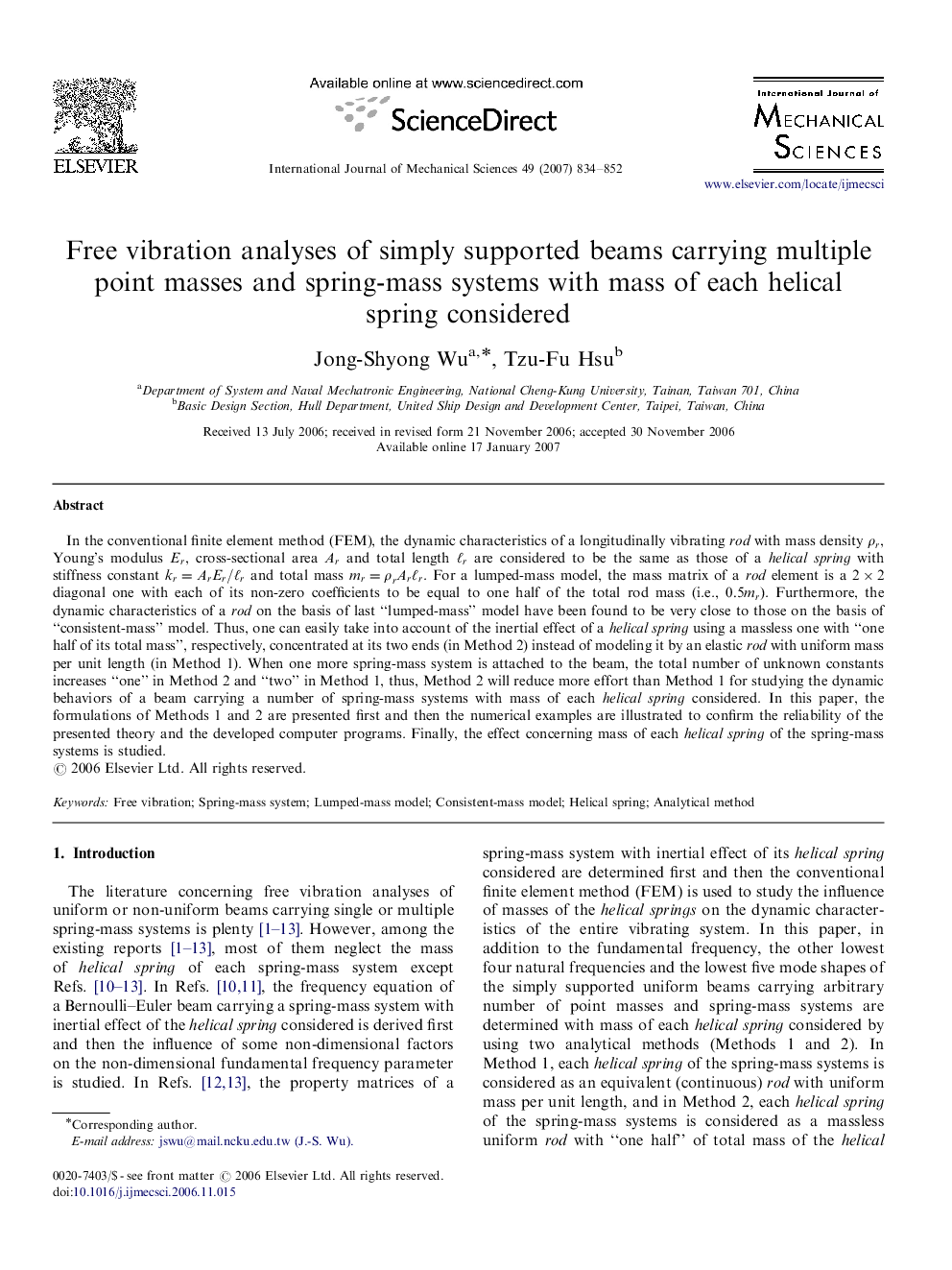| Article ID | Journal | Published Year | Pages | File Type |
|---|---|---|---|---|
| 782837 | International Journal of Mechanical Sciences | 2007 | 19 Pages |
In the conventional finite element method (FEM), the dynamic characteristics of a longitudinally vibrating rod with mass density ρrρr, Young's modulus ErEr, cross-sectional area ArAr and total length ℓrℓr are considered to be the same as those of a helical spring with stiffness constant kr=ArEr/ℓrkr=ArEr/ℓr and total mass mr=ρrArℓrmr=ρrArℓr. For a lumped-mass model, the mass matrix of a rod element is a 2×22×2 diagonal one with each of its non-zero coefficients to be equal to one half of the total rod mass (i.e., 0.5mr)0.5mr). Furthermore, the dynamic characteristics of a rod on the basis of last “lumped-mass” model have been found to be very close to those on the basis of “consistent-mass” model. Thus, one can easily take into account of the inertial effect of a helical spring using a massless one with “one half of its total mass”, respectively, concentrated at its two ends (in Method 2) instead of modeling it by an elastic rod with uniform mass per unit length (in Method 1). When one more spring-mass system is attached to the beam, the total number of unknown constants increases “one” in Method 2 and “two” in Method 1, thus, Method 2 will reduce more effort than Method 1 for studying the dynamic behaviors of a beam carrying a number of spring-mass systems with mass of each helical spring considered. In this paper, the formulations of Methods 1 and 2 are presented first and then the numerical examples are illustrated to confirm the reliability of the presented theory and the developed computer programs. Finally, the effect concerning mass of each helical spring of the spring-mass systems is studied.
